Just because the sun goes down does not mean that it’s time to stop taking pictures, yes there is the “Magic Hour” at sunrise and sunset that all photographers love, but that often means working fast and with constantly changing lighting conditions. I enjoy shooting at night, there is just something about the night – quiet, serene, peaceful, everything seems to slow down from the hustle and bustle of the day. With night photography you often have all the time you need to get the shot (assuming you do not have to get up early). Essentially night photography is the same as daylight photography except that you are working in super slow motion.
Equipment
Your camera needs to have manual controls for best results, including a B or Bulb setting. What this does is keep the shutter open for as long as you hold the button down, giving the ability to take very long exposures, the limit being the muscles in your finger. This is where a cable release comes into play. Not only will it keep you from moving the camera but it will allow you to lock the shutter open and then you can have a snack and a Coke while taking the shot. The self timer can be of use only in situations where shutter speeds are less than 30 seconds for most cameras. For night photography we may be talking hours for an exposure.
Probably one of the most important items you will need is a tripod. Sure you can set the camera on a wall or other object to get a steady shot, but I have found block walls extremely hard to move around for just the right composition. You will want the most sturdy tripod that you can afford and more important that you can and will carry.
For all digital photography you need to be sure and carry extra batteries. Doing night photography with long exposure times your batteries will die much quicker than doing normal photography. Did I mention spare batteries; for your flash, flashlight, cell phone, Ipod and everything else?
Another important item is a removable flash for your camera. This can be used as a complete light source at night, fill flash, or painting with light. The power and features vary greatly with these units. A good full featured model can make a great difference in the quality of your flash photos. You will want a unit that you can set manually.
A good flashlight (big, strong and reliable like a Mag-light) and small flashlight like a penlight or my preference, a LED headlight. The large flashlight will be useful for finding your way, lighting the subject to focus, or painting your subject with light. The small light is for viewing settings on your camera, finding equipment, or locating that Snickers bar in the bottom of your bag. This also gives you a backup light in case one fails or if you did not read the part above about bringing extra batteries.
A watch or timer to be able to track how long your exposures are, sure you count seconds by one-thousand-one, one-thousand-two, one-thousand-three, etc. but this could get old on 5 – 10 minute exposures, not to mention a two hour star trail shot.
Pack Snacks, drinks, and maybe a good book to read. Ok maybe this is not necessary for some of you but this is definitely on my equipment list, and at a minimum you should have water during the hot part of the year, you will still dehydrate at night.
Have Cell phone, identification, photo business card, maps, and related articles handy. You never know when you will have a problem and need help and a cell phone is the best way to get it. If you are stopped by police or other authorities you will need identification and having a photo business card will help add credibility to your ridiculous story about being out in this part of town at 2:00 AM taking pictures. If you are not familiar with the area and start looking for a good photo angle you can easily lose track of where you are, whether in the city or deep in the woods. A map, compass, GPS, or other items to help find your way may prove to be very necessary. A little insect repellant might not be a bad idea either.
Bring appropriate clothing for the weather. What may be a cool evening can turn to freezing cold when the sun goes down and you’ve been out in it for two hours or more.
Brains (yeah this could be an important one). Think about your safety, have a plan for what could go wrong and assume that it will. Be sure that someone knows where you are and when to expect you back. Think about what you would do if you fall from a cliff, get lost, mugged, arrested, etc. and be prepared. Prior to 9-11 if you were caught trespassing you would probably just be told to leave, today you may well be detained or arrested. The best thing is to have written permission if you are going to shoot on private property.
Think about bringing a companion. This may be a fellow photographer (yeah, they’ll learn all your secrets) or anyone else just to hangout with you (and maybe help carry equipment).
Subject Matter
Almost anything can be photographed at night but some subjects are just made for night photography, below are examples of some of these subjects.
Basics
Night photography is not “no light photography”. You must still have a light source, either the moon, stars, city lights, or other source of light. There are many different ways of photographing at night. Some are actually exposing for the light source such as shooting neon signs, or you may be using the neon sign to illuminate your subject on the street. Each of these require different exposure settings and each can have different results that make good photos. There is no “correct” exposure in night photography. With most subjects we could expose long enough to appear similar to a daylight exposure (see the example at right of the two boats taken at the same time). With night photos we get a very flat image lacking the contrast that we get during the day with sunlight.
Shoot extra frames and remember you can delete the ones you don’t want. The more you take the better the chance of a super shot, especially if you are handholding a low light shot.
Use manual focus because you probably don’t have enough light for the auto focus to work. Auto focus may try and refocus for each shot, without results. “Ok great, but I can’t see to focus either”. Remember the big flashlight on the equipment list? Use it to light up your subject and focus, then turn it off to make the exposure.
You may also be doing night photography simply because that is when you can shoot your subject, and in this case will need a flash or other light source. A good example of this is shown with the photo of the tree frog, the photo below shows me taking the photo.
Photo by Kendrick Disch ©2006
Greg shooting tree frog with macro lens and flash mounted
on a bracket above the camera pointed down at the subject.
Settings
One of the biggest questions in night photography is how to set the exposure. If you search the internet you can find various charts with typical exposure settings for a number of common scenes. We are shooting with digital now, and the best tool to determine exposure is your LCD monitor. You can start with what your meter indicates. Take your shot, evaluate the results and shoot again until you get the correct desired exposure. Be sure to set your LCD brightness to normal, not to the bright level you left it on, for a true representation of what you are shooting.
I am a firm believer in using the histogram to check exposure. However for night photography, I find it to be fairly useless. For example the histogram below would indicate a badly underexposed photo with some burned out highlights. Which is what we have but I would not trash it based on this alone.
Close only counts in hand grenades and horseshoes (Oh yeah! and night photography). The difference between 3 minutes and 6 minutes is only 1 stop of exposure. During the day one stop of exposure is the difference between 1/50 and 1/100 of a second. The darker it is and the longer the exposure time, the less critical the exact time is.
Setting your ISO at 100 will give the best quality picture. If you are shooting a still scene and can take long exposures this is the best setting. With a higher ISO setting we get what is called digital noise. This is specs of color similar to film grain that stands out from the otherwise solid color. Digital noise shows up the most in solid dark areas. Yeah, we have a lot of those in night photography. The example below shows high digital noise shot at ISO 800.
However, you can set the ISO speed higher and in effect gain light. This will allow you to get shots that would not be possible otherwise, especially if you have a moving subject. Some cameras now offer a noise reduction for long exposures that can help a great deal.
Getting a good white balance is one of the most difficult parts of night photography. You often have mixed light sources with very different color temperatures. Sometimes you can not use a manual white balance setting because you are shooting the light source, not a subject lit by the source. I have two solutions to this. First, and my preferred method, is to shoot in a RAW file format and visually set the white balance on my computer during post processing. The second, is to shoot the same shot using different white balance settings and then pick your favorite later. Auto white balance never seems to give the best results in night photography.
Another feature of many newer DSLR cameras is mirror lockup. When the mirror of a DSLR camera snaps out of the way it causes vibration and possible movement. This feature enables the camera to lock the mirror up on one press of the shutter button. A second press shutter button opens the shutter allowing time for the vibration to stop. This is most useful on exposures of 1/60 to 1/2 second. For exposures in minutes, the amount of exposure during the vibration, is such a small percentage of the exposure that it does not affect the quality of the image.
I always set my camera to shoot in the RAW file format for night photography. This gives me the opportunity to fine tune the exposure and the white balance in post processing the images. Shooting RAW file format also provides a greater amount of information, should the image need additional editing or adjustments in Photoshop.
Advanced Techniques
Painting with Light, is a term used in night photography where a light source, either a flash or other light, such as a flashlight, is used to light only selected areas of the photo. In the example of the coal miner statue, the coal pile in the back was completely dark. I used my flashlight to paint it with light during the exposure.
The photo of the canyon walls is an extreme example of painting with light using an alternative source of light. A truck with an industrial generator and 40,000 watts of spotlights lit the canyon wall along the Colorado river in Moab UT. This is what would be seen on the Canyonlands by Night boat tour.
Photoshop is image editing software that is designed for photographers and offers many capabilities to enhance and modify your photos. Using Photoshop to “Double Process Raw Files” is a way to get more tonal range from your photos. You adjust the exposure in the RAW converter for the bright areas and dark areas as two separate images and then combine them in Photoshop using layers (this will be a another article). The image below was actually made from two images made about an hour apart, without moving the camera, and then combined in Photoshop.

Image of combined photos using one shot for the clouds and a second for the traffic which was a 6 min 58 sec. exp
As you can see there is world of opportunity for great photography after the sun goes down. With digital you can experiment and check your results immediately, which makes night shooting easy to master with practice.
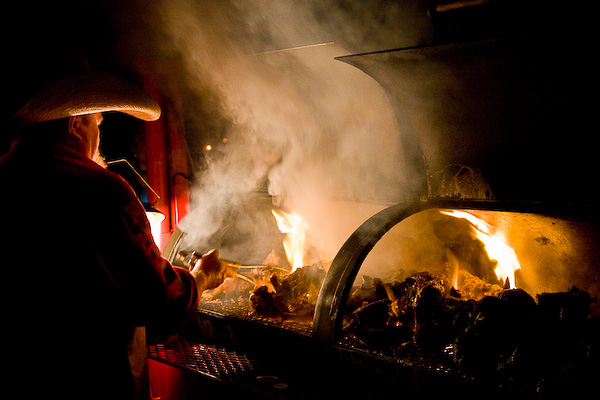
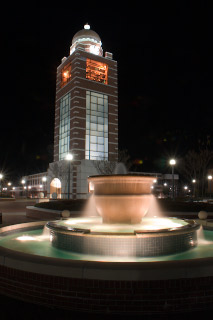

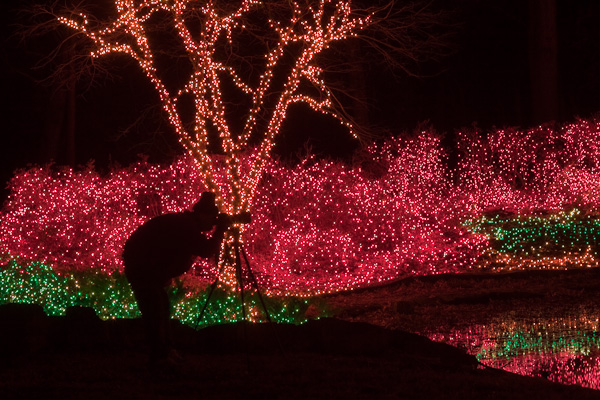
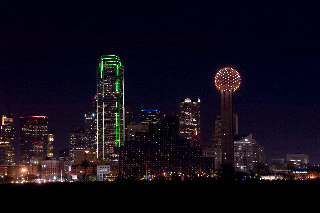
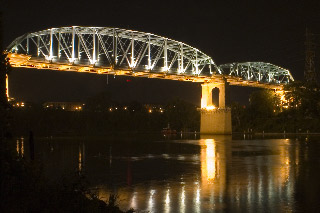
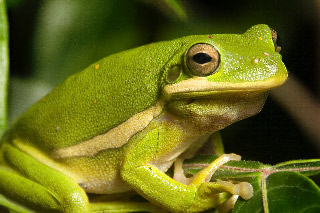
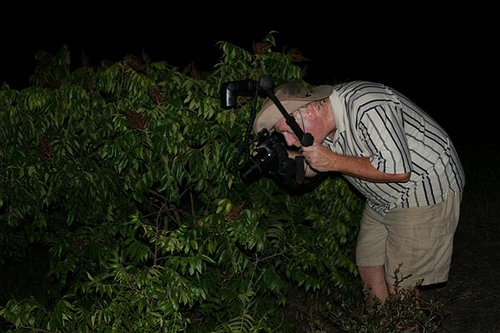


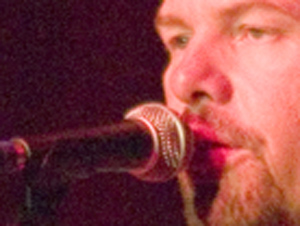
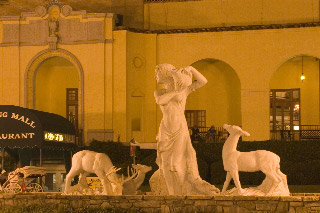
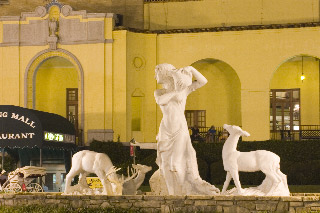


Great information! I really enjoyed the first picture. Seems like the smoke, fire, and cowboy hat go together well.
Thanks for sharing your knowledge!
Great article.
I love to shoot night pictures and lack a lot of knowledge and skill that it requires.
Thanks for the advice.